Curtain Wall for Stadiums
Curtain wall systems in stadiums are used to enhance the aesthetic appeal, functional performance, and sustainability of the building. As stadiums are large-scale structures designed to host thousands of spectators, a well-designed curtain wall can provide a visually striking exterior, maximize the spectator experience, and contribute to energy efficiency, durability, and safety.
In this guide, we’ll discuss the design considerations, advantages, and key features of curtain walls for stadiums.
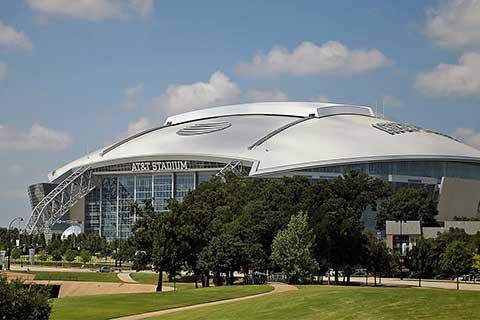
Stadium glass curtain wall
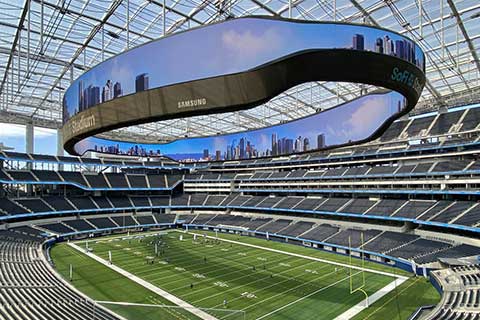
Stadium glass curtain wall
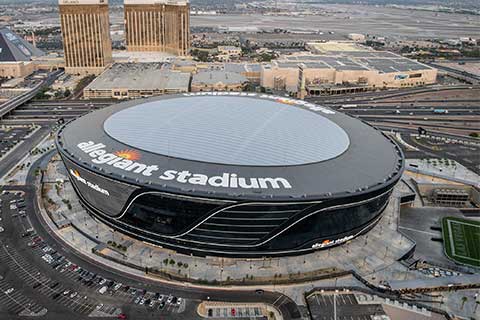
Gymnasium special steel structure curtain wall
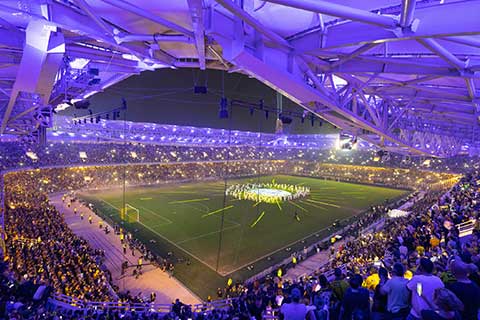
Stadium glass curtain wall
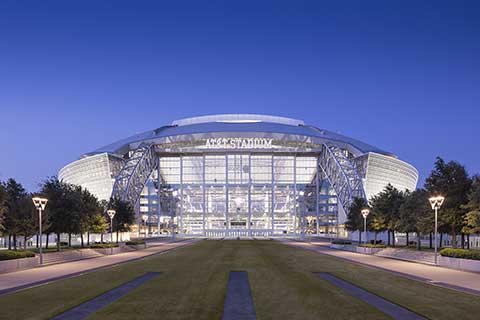
Gymnasium special steel structure curtain wall
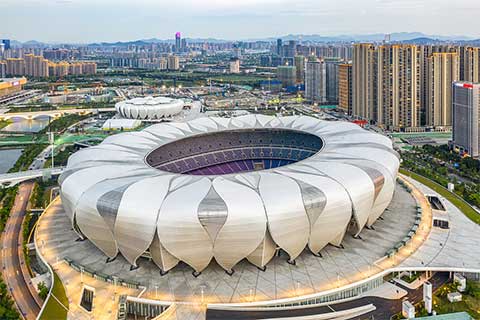
Gymnasium special steel structure curtain wall
Design Considerations for Curtain Walls in Stadiums
When integrating a curtain wall into a stadium design, it’s important to balance aesthetic appeal, structural integrity, and environmental factors. The curtain wall must be capable of withstanding extreme weather conditions, large-scale audience traffic, and high-performance requirements.
Aesthetic Appeal
- Iconic Architecture: Stadiums are often designed to be landmark buildings with strong visual impact. Curtain walls can contribute to a striking and modern aesthetic, often forming part of a bold architectural statement.
- Transparency and Light: The transparency of the glass in a curtain wall can enhance the exterior design of a stadium by allowing light to penetrate into the interior. This effect is particularly useful for open-air stadiums or for spaces like lobbies, entrances, and concourse areas.
- Branding and Identity: Curtain walls are an opportunity to highlight a stadium’s branding or team colors through color-tinted or printed glass. The use of decorative elements, LED lighting within the curtain wall, or interactive media surfaces can further personalize the stadium’s image.
Structural Considerations
- Wind Loads and Safety: A stadium’s curtain wall must be designed to resist high wind loads, especially in open-air stadiums or in areas prone to extreme weather. The system must also be capable of withstanding seismic forces and ensuring structural integrity. This is critical for the safety of fans, players, and staff.
- Glazing Options: For larger stadiums or those with extreme weather conditions (rain, snow, etc.), impact-resistant glazing or laminated glass can be used in curtain wall systems to ensure the safety of both the building’s occupants and the building itself.
- Durability: Given the high-traffic nature of stadiums, the curtain wall system should be made from highly durable materials, especially aluminum, steel, or fiberglass frames, with toughened glass or polycarbonate panels for areas requiring extra strength.
Energy Efficiency and Climate Control
- Thermal Insulation: Curtain walls can help regulate the interior temperature, contributing to energy efficiency. High-performance curtain walls with insulating glass units (IGUs) and Low-E glass can reduce the need for heating or cooling, making the stadium more energy-efficient.
- Solar Control: In stadiums with significant glazing on the exterior, particularly those exposed to direct sunlight, solar control glass with low solar heat gain can reduce glare and heat build-up in internal spaces. This can help improve comfort for spectators and reduce cooling loads.
- Natural Ventilation: Curtain walls may also incorporate operable windows or ventilation openings to facilitate natural ventilation in certain areas of the stadium. This is particularly useful in concourses, lounges, or areas where large crowds gather.
Acoustic Performance
- Noise Control: Stadiums are inherently noisy places, and a well-designed curtain wall system can help mitigate external noise, particularly from surrounding areas like highways or urban centers. By using soundproof glass or laminated glass, the curtain wall can ensure a quieter interior environment for spectators and performers.
- Vibration Resistance: The curtain wall should also be designed to resist vibrations and ensure that sounds from events don’t escape the venue or disturb nearby areas. This is especially important in closed stadiums or indoor arenas.
Lighting and Media Integration
- LED Integration: Many modern stadiums use curtain wall systems to integrate LED lighting or digital displays into the façade. This can create dynamic, eye-catching lighting effects and allow the stadium to be a visual beacon during events, especially at night. Curtain walls can house these digital displays or light fixtures while still maintaining transparency or visual appeal.
- Backlit Glass Panels: Backlit glass can be used in curtain walls to create a striking visual effect, adding an extra layer of interaction to the stadium’s façade, which can display the team’s logo, sponsors, or digital artwork.
6 Steps To Cooperation
01.
1. Project research
Project situation, project size, location
02.
2. Design and construction plan
Bill of Quantities, Project Drawings, Product Information Confirmation
03.
3. Scheme confirmation
Construction plan, budget evaluation and quotation
04.
4. Construction preparation
Technical support, survey and design, material ordering
05.
5. Construction and guidance
Send personnel to the site to support construction
06.
6. After-sale service
The goods are usually packaged and transported or delivered according to the client’s requirements.
Send A Message
Contact Info
Call Us
+86-17727814139
+86-755-27386668
Our Email
monikachenwall@gmail.com
Our Location
14F, Building 1, No. 35, Guangtian Road, Yanluo Village, Baoan District, Shenzhen
Working Hours
Mon-Fri: 8AM-22PM
Sat-Sun: 8AM-20PM